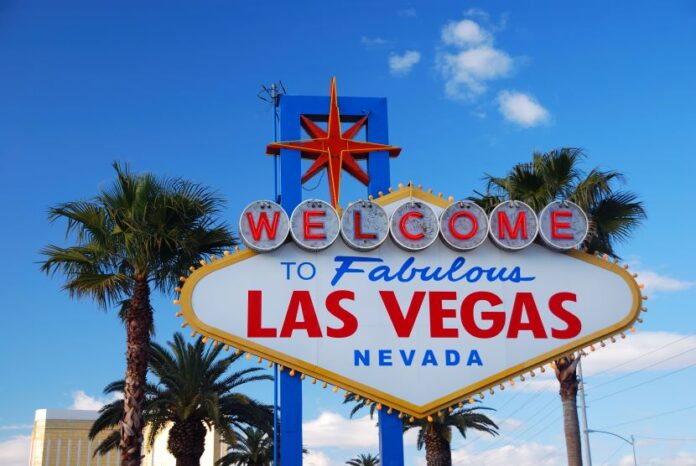Las Vegas Tourism Navigates Economic Challenges Amid Declining Visitor Numbers And Hotel Occupancy
In August 2025, Las Vegas welcomed nearly 3.2 million visitors, reaffirming its status as a premier global entertainment destination. However, this robust figure masks a disconcerting reality; visitor numbers saw a decline of 6.7% compared to the same month in 2024. This drop in tourism raises critical questions about the resilience of Las Vegas’ tourism industry against a backdrop of shifting economic pressures and changing traveler preferences.
Hotel Occupancy Reflects Market Challenges
The decline didn’t stop at visitor numbers; hotel occupancy rates in Las Vegas also took a hit. Reports from the Las Vegas Convention and Visitors Authority (LVCVA) indicated a 3.7% year-over-year drop in occupancy for August, settling at 77.5%. While this rate remains competitive on a global scale, the dip indicates a troubling shift in demand dynamics. A decrease in occupancy not only impacts hotel revenues but also trickles down to affect service employment and the broader economic framework of the hospitality sector.
Economic and Market Factors Underpinning the Decline
Several intertwined factors contribute to this downturn in visitor volumes and hotel room utilization. Rising accommodation prices have made staying in Las Vegas less accessible for price-sensitive travelers, pushing them toward alternative destinations. Additionally, fluctuating convention attendance—an essential driver of midweek hotel occupancy—has exhibited inconsistency this year, threatening a traditionally strong segment of business travel.
Geopolitical influences and changes in travel policy introduce further complications. Inflows of international visitors, particularly from Canada and Mexico, have slowed, reflecting a broader climate of economic caution and tension. Restrictions from the current U.S. administration have dampened enthusiasm for inbound travel, with significant declines in Canadian tourists representing a crucial demographic in Vegas’ visitor profile.
Responses and Strategic Initiatives to Revive Tourism
Faced with these challenges, local tourism authorities are launching aggressive campaigns to resurrect Las Vegas’ appeal. Initiatives are focused on citywide discounts across hotels, dining, and entertainment sectors to incentivize visits and encourage extended stays. The strategic timing of high-profile sporting events, such as major boxing matches and NFL games, aims to draw visitors into the city, stimulating related economic activity.
Moreover, there’s a strong push to diversify offerings beyond the traditional gaming-centric model. Efforts are being made to enrich the cultural landscape, increase family-friendly amenities, and broaden the scope of conventions—a strategy geared toward attracting a more varied consumer base and creating a sustainable visitation framework.
Broader Economic Impact and Outlook
The ripple effects of reduced tourism extend far beyond hotels; they encompass the entire hospitality ecosystem in Las Vegas. Casinos, restaurants, entertainment venues, and transportation services all feel the pinch from lower occupancy rates. This pressure often translates into reduced operating hours or workforce downsizing, directly affecting the livelihoods of thousands who depend on this sector.
Despite these obstacles, gaming revenue continues to show relative strength, buoyed by a high-value visitor demographic. However, the path forward remains contingent on stabilizing visitor volumes while adapting service offerings to meet the evolving preferences of diverse consumer cohorts. Analysts emphasize that robust growth necessitates innovative luxury experiences that resonate with younger travelers who exhibit different spending behaviors.
Contextual Factors and Forward-Looking Perspectives
Current trends in Las Vegas tourism are reflective of broader national economic currents and policy shifts that shape travel decisions. Local governments and tourism agencies are tapping into strategies to restore international travel confidence while addressing barriers such as tariffs and immigration regulations viewed as obstacles to visitation. The city’s recovery trajectory relies on agile marketing approaches, infrastructure investments, and tapping into diverse markets to spread risk more effectively.
Forecasts, though cautious, suggest a silver lining. With targeted promotional efforts and marquee events lined up, projections hint that Las Vegas might gradually reclaim visitor levels lost in 2025. However, the ongoing need for attention to pricing strategies, innovative experiences, and policy reforms remains essential in fostering sustained growth in the tourism sector.
Efforts to Reinvigorate Tourism
To combat the declining numbers, Las Vegas tourism authorities have rolled out robust promotional campaigns designed to enhance the city’s desirability. These initiatives encompass discounts on accommodations, dining, and entertainment, aimed at both domestic and international travelers. Central to this strategy is leveraging high-profile sports events, which not only draw crowds but also serve as catalysts for economic activity within the hospitality sphere.
With a shift in focus towards diversifying tourism offerings, Las Vegas is working to expand beyond traditional gaming attractions. There’s an increasing emphasis on cultural events, conventions, and family-oriented entertainment to broaden the city’s appeal and mitigate reliance on any single segment of the market.
Economic Impact and Sector Outlook
The economic ramifications of dwindling tourism extend across Las Vegas’s vast hospitality matrix, impacting everything from casinos and restaurants to entertainment venues and transport services. Lower occupancy rates create revenue pressures that can lead to operational adjustments like reduced hours or staff cutbacks. While gaming revenues remain relatively healthy due to engagement from high-spending visitors, the overall sector outlook hinges significantly on restoring consistent visitor numbers and adapting to shifting consumer preferences. Industry experts assert that successful recovery will necessitate strategic pricing adjustments coupled with innovative luxury offerings that resonate with younger demographics.
Broader Context and Future Prospects
The current landscape of tourism in Las Vegas mirrors larger economic and policy realities that influence travel decisions both nationally and globally. Recognizing the need to regain global confidence in the destination, local authorities are committed to addressing perceived barriers to travel, such as tariffs and immigration policies. The city’s recovery will depend on strategic marketing campaigns, substantial infrastructure improvements, and a continued push to cultivate diverse visitor markets. The outlook, though cautiously optimistic, signals that well-executed initiatives and significant events could help reverse the decline observed in 2025, paving the way for a resilient future.
